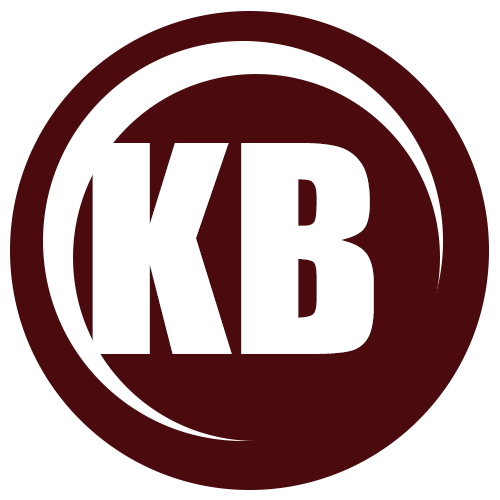The circulatory system is defined as a body system that has the primary function of transporting oxygenated blood throughout the body, and the key organ that does this is the heart. Only birds and mammals have four chambers to their heart. Instead, the blood, called hemolymph, carries nutrients and is white or yellow, he said. The ventricle is divided more effectively by a partial septum, which results in less mixing of oxygenated and deoxygenated blood. The human heart weighs about 0.6 pounds (0.3 kilograms), but a giraffe's weighs about 25 pounds (opens in new tab) (11 kg), as the organ needs to be powerful enough to pump blood up the animal's long neck. Picture filling a jug of water and carrying it to water your plants. The blood then continues through the rest of the body before arriving back at the atrium; this is called systemic circulation. As it moves through your body and organs, blood collects and drops off nutrients, hormones and waste products. Two-Chambered Heart: Overview & Anatomy | How Many Chambers Does the Heart Contain? Figure 1. The functions of the four chambers mimic that of the mammalian heart. Mammals and birds have four-chambered hearts, but frogs have just three, with two atria and one ventricle, said Daniel Mulcahy, a research collaborator of vertebrate zoology who specializes in amphibians and reptiles at the Smithsonian Institution, Museum of Natural History in Washington, D.C. Deoxygenated blood enters the sinus venosus and flows into the atrium, Moore said. These animals typically have low metabolisms. The thymus is an organ in the upper chest. Hematological parameters of wild and farm mink, red fox and raccoon dog Fluid may leave the blood, usually with food and other organic molecules in solution, and pass to the tissues, from which it returns in the form of lymph. These peptides are natriuretic, relax smooth muscle, and in general oppose vasopressin and angiotensin II. The blue whale's heart is the largest of all the animals living today. Members of the phylum Echinodermata (starfishes and sea urchins, for example) have a complex water vascular system used mainly for locomotion. The division helps for efficient flow of oxygenated and deoxygenated blood. A capillary is a small vessel in the circulatory system that gives blood and nutrients to cells. Blood vessels carry blood to the lungs for oxygen. Healthy bovine heart. This separation of oxygenated blood from deoxygenated blood ensures that the highest concentration of oxygen in the blood is pumped to the cells. Open Circulatory Systems Open circulatory systems are common to most arthropods and mollusks. In mammals and birds, the heart is also divided into four chambers: two atria and two ventricles, as illustrated in Figure 3b. The combination can set the stage for an imbalance in myocardial oxygen demand and supply, leading to myocardial ischemia. In other words a chemical form of energy. Blood goes from the heart to the lungs to get oxygen. Distribution of the Ringtail Ringtails live in the Southwestern United States and across Mexico. Closed circulatory systems are a characteristic of vertebrates; however, there are significant differences in the structure of the heart and the circulation of blood between the different vertebrate groups due to adaptation during evolution and associated differences in anatomy. In mammalian hearts, you fill the jug about 3/4 full then take it to the plant, but don't totally empty it. Bear kills jogger in Italian Alps. Order: Carnivora. All vertebrates, however, have a closed systemthat is, their circulatory system transmits fluid through an intricate network of vessels. The sun is shining and the leaves are changing color. In the absence of a stenotic lesion, afterload is determined by the relative stiffness of the arteries and by the degree of constriction of the arterioles. In all vertebrate organisms, as well as some invertebrates, this is a closed-loop system, in which the blood is not free in a cavity. Cephalopods are also literally blue-blooded because they have copper in their blood. Next, let's look at some other adaptations of the bird circulatory system. The tone of vascular smooth muscle depends on many factors, some of which constrict the muscle (eg, adrenergic agonists, angiotensin II, vasopressin, endothelin) and some of which relax the muscle (eg, norepinephrine, atriopeptin, bradykinin, adenosine, nitric oxide). Blood flows through the systemic arterial (left ventricular) or pulmonary arterial (right ventricular) trees and is critical to satisfactory function of the heart and consequent perfusion of organs with adequate quantities of blood and the oxygen it contains. Nematoda, Rotifera, and a number of other smaller eumetazoan classes and phyla have a fluid-filled cavity, called the pseudocoelom, that arises from an embryonic cavity and contains the internal organs free within it. Crocodilians have a unique circulatory mechanism where the heart shunts blood from the lungs toward the stomach and other organs during long periods of submergence, for instance, while the animal waits for prey or stays underwater waiting for prey to rot. Whats the Difference Between Veins and Arteries? Links: External anatomy Lungs Inflated (left) Oral cavity Lungs Inflated (right) Larynx Lungs Inflated (bottom view) Rib Cage Lungs inflated (dorsal view) Left Lung Bronchus. circulatory system, system that transports nutrients, respiratory gases, and metabolic products throughout a living organism, permitting integration among the various tissues. Within the cell, cyclosis (streaming of the fluid cytoplasm) distributes the metabolic products. The amount of oxygen available for production of this energy is termed the tissue oxygen content. The function of the heart is to pump blood. Stretching of receptors in the atria and ventricles causes them to release natriuretic proteins: brain natriuretic peptide (BNP) primarily from the ventricles and atrial natriuretic peptide (ANP) from the atria. One phylum, Cnidaria (Coelenterata)which includes sea anemones, jellyfish, and coralshas a diploblastic level of organization (i.e., its members have two layers of cells). During internal respiration, oxygen and carbon dioxide . Manage conditions like diabetes, high blood pressure and high cholesterol. Your circulatory system also removes carbon dioxide and other wastes your cells do not need. Tension increases with conditions that increase afterload (pressure), such as pulmonary valve stenosis, subaortic stenosis, systemic or pulmonary hypertension, or preload (volume), including mitral valve insufficiency, left-to-right shunting defects, and dilated cardiomyopathy. Articles from Britannica Encyclopedias for elementary and high school students. The main function of the circulatory system is to provide oxygen, nutrients and hormones to muscles, tissues and organs throughout your body. Our editors will review what youve submitted and determine whether to revise the article. Discover how bird heart chambers and circulatory system structures are similar to and different from mammals. In this type of circulatory system, blood tends to be sluggish because it is diffusing rather than readily being pumped through vessels. The right ventricle is a larger chamber that pumps the blood to the lungs. Many invertebrate animals are aquatic and the problem of supplying fluid is not critical. succeed. It is in the gills where there is oxygen exchange across cell membranes and into the blood, Moore said. External respiration, also known as breathing, involves both bringing air into the lungs (inhalation) and releasing air to the atmosphere (exhalation). The purpose of this is to divide the oxygenated and deoxygenated blood efficiently. Stay up to date on the latest science news by signing up for our Essentials newsletter. Thus, the circulatory system is a critical. Birds' hearts also look different on the inside compared to mammals'. "It is the size of a small car and has been weighed at about 950 pounds [430 kg]," said James Mead, a curator emeritus of marine mammals in the department of vertebrate zoology at the National Museum of Natural History at the Smithsonian Institution. Pulmonary veins carry the oxygenated blood from the lungs to the hearts left atrium (upper heart chamber). Heart rate variability synchronized with respirations is a good indicator of cardiac health. The circulatory system review (article) | Khan Academy At rest, the SA node discharges ~30 times/min in horses, >120 times/min in cats (typically 180220 times/min in a hospital setting), and 60120 times/min in dogs (range of 40260 bpm, with average daily rate of 80 bpm for an adult dog based on 24-hour Holter monitoring), depending on their size. These key parts of your circulatory . Corynebacterium pseudotuberculosis Infection of Horses and Cattle, Introduction to Heart and Blood Vessel Disorders in Dogs, Introduction to Heart and Blood Vessel Disorders in Cats, Introduction to Heart and Blood Vessel Disorders of Horses. The sinoatrial (SA) node is the pacemaker of the heart. She has a Master's Degree in Cellular and Molecular Physiology from Tufts Medical School and a Master's of Teaching from Simmons College. Exchange of fluids is assisted by the pulsing of the jellyfish body. Raccoons have both receptor types in their respiratory systems, similar to swine but with uneven distribution among tissues. - Uses, Types, Examples & Side Effects, What Is an NSAID? The second is the pulmonary . Live Science is part of Future US Inc, an international media group and leading digital publisher. It works to transport oxygen and other nutrients to all the organs and tissues in. Author of, Lecturer in Zoology, University of Edinburgh. You can see this is quite inefficient compared to bird hearts, which fill the jug to the brim and them dump every last drop out onto the plant. Physiology - The Raccoon Resource The circulatory system picks up nutrients from the digestive system and oxygen from the respiratory system and takes these essential materials to all cells in the body. As in other animals, the heart drives blood throughout the body. Reptile Circulatory System | Overview, Anatomy & Diagrams, Amphibian Circulatory System | Open vs Closed Circulatory System, Bird Skeleton | Pneumatic Bones, Anatomy & Structure, Respiratory Systems of Birds, Mammals & Amphibians | Animal Respiratory Systems. Citing for websites is different from citing from books, magazines and periodicals. "Open vs. Closed Circulatory System. The skulls of raccoons are what is unique about the animal. In heart failure, the baroreceptors (laden with Na+/K+-ATPase) become fatigued, which reduces the afferent signals to the medulla oblongata.
Jackson County Obituaries,
Softball Defensive Coverage,
Seth Macfarlane On Rush Limbaugh Death,
Articles R

